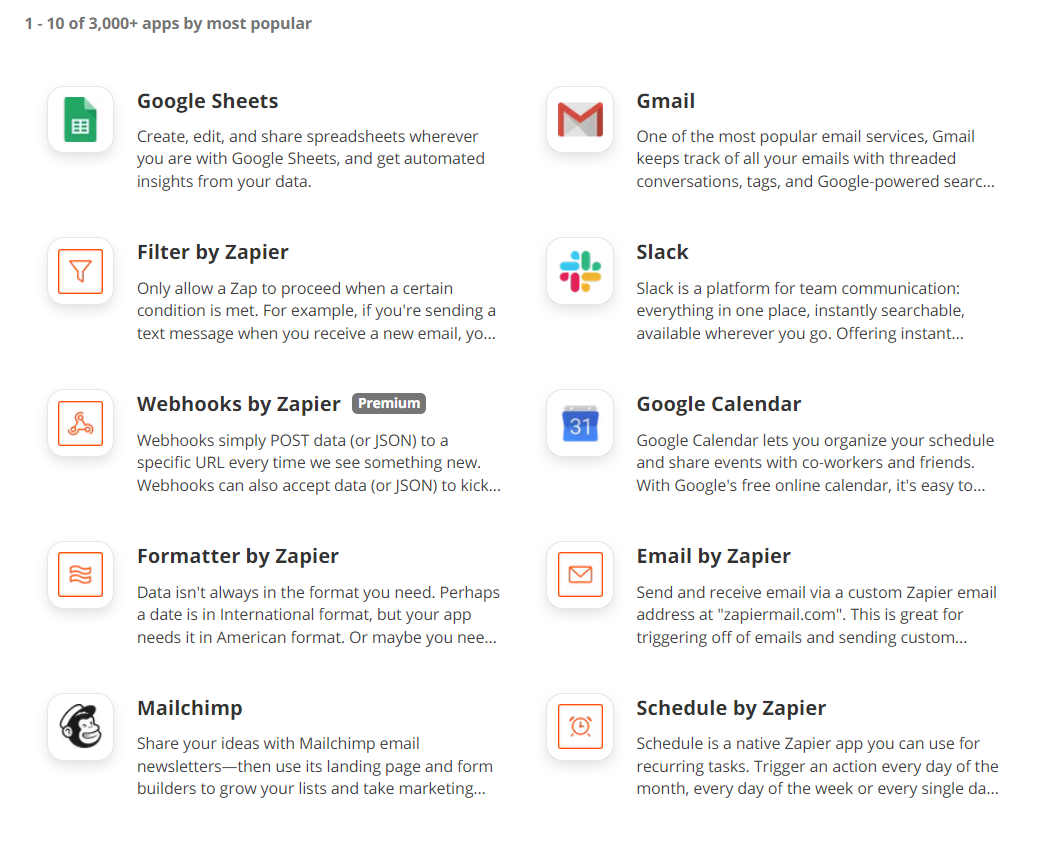If you ask the average person on the street what 'automation' means to them, you might receive some mixed responses. You may set off sceptics into a rant about robots stealing our jobs, or self-service machines at the supermarket. To many people, however, automation is a way of streamlining repetitive tasks and being able to spend more time on what really matters.
This is particularly true in the eCommerce world, where automation plays an increasingly vital role in the day-to-day running of many online businesses, and also helps provide a platform for them to grow.
How does automation help businesses?
Think about it like this:
If you make a purchase from a Shopify store or any other online marketplace, you'll likely receive various emails between making the order and it arriving on your doorstep. Order confirmations, notifications about the shipping of your item, a review request once the product has been received - all of these emails will be part of an automated workflow, designed to send you notifications in real time.
Now imagine someone is having to do this manually, for every order a store receives. This may be possible for smaller stores, but certainly isn't very fulfilling, and for larger, growing stores it's completely out of the question. Companies would need entire teams dedicated to sending email confirmations and delivery updates, day in day out.

Copy and pasting order numbers and product details over and over again is likely to result in jaded employees, leading to a high turnover of staff, leading to an overall disjointed and unpleasant customer experience.
Automating repetitive tasks frees up time to allow teams to focus on more important things, and process more orders as a result. Whatever you're selling, it's well worth looking into how automation can help your online business. To get you started, here are some of the best eCommerce automation tools out there.
1. Shopify Flow
As the name suggests, Shopify Flow isn't on other app stores - in fact, it's exclusive to customers of Shopify Plus. This means it isn't the most accessible automation tool out there, but for those who are using Shopify Plus, it's a must have addition to your store.
Flow allows you to build workflows to manage orders in your Shopify store, giving you the chance to automate tasks in various areas of your online store, such as:
- Customer Experience: create a support ticket for any negative review you receive, and automatically log them in a Google sheet for your customer success team to track.
- Inventory Management: get notifications when your products are getting low in stock and automatically remove listings from your store when your stock is depleted.
- High Risk Orders: automatically cancel, restock and log high risk orders, to cover yourself in case of any potentially fraudulent orders.
- Customer Loyalty: send personalised messages over text or physical mail for orders over a certain value, or initiate email campaigns to target at risk customers in an attempt to boost customer retention.
For a full list of things you can achieve using Flow, check out the Shopify app store listing. Flow also plugs in with many other apps on the Shopify app store.
2. Zapier
To really get ahead, eCommerce stores tend to use a ton of different apps to manage their stores; for example, Shopify merchants use an average of 6 apps to help with the running of their store. Each tends to specialise in a certain area, but sometimes these apps need to communicate and share data between them. This can become problematic and time-consuming if they don't connect with a native integration. Thankfully, that's where Zapier comes in.
Zapier acts as a middle man, connecting thousands of apps together. It's particularly useful when looking to connect two apps that don't integrate natively. Pre-Zapier, connecting two apps without an integration would take a lot of development time and effort. Zapier makes it much easier, and requires no knowledge of code whatsoever.

Zapier places itself uniquely as a connector that can be used for tasks of any size - it can handle connecting established platforms and services, for example automatically creating a HubSpot account for new MailChimp subscribers, but it can be used for something as small as sending a daily GIF in a Slack channel. Powerful but easy to use, Zapier is certainly an attractive option for an eCommerce business of any size.
3. Mailchimp
Mailchimp allows you to automate email communication with your customers. We've already covered sending repetitive emails as a pain-point, but Mailchimp can be useful in a variety of scenarios for different stages of a customer journey. Whether it's purchase follow-up emails, welcome emails, thank you emails, newsletters or even automated sales emails, Mailchimp makes it easy to keep your customer base happy and informed. Not only does this save a lot of time, it can save a lot of money too.
Take abandoned carts, for instance. The Baymard Institute found that the average cart abandonment rate hovers around 70%, with some studies finding it to be as high as 74%. This obviously represents a huge loss of income, and presents a dilemma - these (potential) customers are prime for retargeting, but manually following up on each abandoned cart would take forever, particularly if the stats on abandoned carts are correct.
Mailchimp, however, can automatically send emails to customers who abandoned their carts, giving the chance to recover these customers who have almost slipped through the net without putting a strain on your team's resources. Abandoned cart emails can have a recovery success rate of up to 30%, which represents a lot of salvaged revenue!
Another great Mailchimp feature is the ability to segment customers based on their buying behaviours and habits, allowing you to send hyper-relevant offers to customers based on factors such as their order history, or average purchase size. When it comes to email automation Mailchimp is king, saving your team from mundane tasks and saving your business some money in the process.
4. Shiptheory
Here at Shiptheory, our goal is to automate the shipping process for businesses of all sizes. Shiptheory sends data and information from online marketplaces such as Shopify and eBay, and also sites created from website builders such as Wix and Squarespace. The data from these platforms will be sent to your preferred carriers, using native integrations with FedEx, DHL and many more carriers across the globe. Click here to check out a full list of carriers and sales channels.
Shiptheory can automatically print shipping labels and customs information for your orders without even having to log into the Shiptheory platform, saving it's users hours and hours each day and enabling them to process much higher order volumes.
It also makes things much simpler as shipping rules change. Although Shiptheory has customers all across the globe, it's of particular benefit for customers shipping to and from the United Kingdom as Brexit impacts shipping rules and regulations. In an ever changing world of global commerce, Shiptheory is here to help you keep on top of the rules as well as your orders.
5. Buffer
Keeping customers, prospects and anyone in your network updated is key to keeping everyone happy and informed, but managing social media accounts can be an annoyingly granular task. Sprout Social's social media findings show that posts on LinkedIn, Twitter and Facebook all have different times when posts receive the most engagement. LinkedIn posts, for example, perform particularly well between 9-11am on Tuesdays and Thursdays, whereas Twitter's most popular day is Wednesday by far.

Buffer still relies on your input to some extent, but it can streamline this task massively. As a content management system, Buffer allows you to schedule posts across all of your social media channels to be posted when they'll have the most impact, rather than having to drop everything you're doing to post at a certain time. This means you can schedule all of your social posts in one sitting to be posted out over the next week or month.
6. Trustpilot
Reviews can be a cornerstone of success for your eCommerce business. Your product and customer service may be fantastic, but it's important to communicate this to prospects who haven't yet engaged with your business
In a customer service study, 43% of customers believed a business didn't care about their opinion, and so didn't leave a review. In reality, positive reviews from existing customers are a key component in new conversions. Customers often trust fellow buyers over what a brand tells them directly. Collecting these reviews can be time consuming, however, and if customers ignore requests for reviews, it can be somewhat of a fruitless exercise.
Trustpilot has a built-in AFS - Automatic Feedback System - which can automatically send buyers a review request that will link straight up to your Trustpilot account. Request emails are scheduled by default to 7 days after a trigger, but this can be shortened or lengthened to suit your needs. The triggers themselves can be adjusted too, with the request sending X amount of days after shipping notifications, order notifications or just about anything.
The benefit of this is, a review request can be timed perfectly for when a customer it's expected to receive or use their product for the first time, allowing you to capitalize on their initial excitement. With Trustpilot's AFS, you're increasing your chance of getting a positive review by engaging a customer in the honeymoon period, without having to put hundreds of reminders in your calendar of when to send reviews.
7. Mixpanel
Even if you have plenty of customer data, it can be hard to gain real insights without a reliable way of visualising and interpreting the data. Mixpanel is an automation tool that enables it's users to create dashboards full of useful graphics and statistics containing insights about your customer behaviours. This is perfect for internal team meetings to assess company performance, and learn what's working and what isn't.
One of Mixpanel's primary aims, according to their website, is to enable anyone to understand and interact with their dashboard 'no matter their data expertise'. In this sense, Mixpanel automates in a different way to many of the other tools on the list. Rather than removing small or meaningless tasks, Mixpanel's dashboard eliminates the need for your team to be data specialists by automatically generating graphs and statistics
Mixpanel uses "event-based" tracking, which offers far deeper insights than traditional models that track information like page views and browser sessions. Event-based tracking looks at specific interactions between customers and products, with properties to define each of them. Overall, this allows all of your team to gain far greater insight into your customers, without having to be experts on the data.
How do I get started?
We've given you a whistle-stop tour, but whatever service or product your eCommerce business offers, there are likely to be some apps out there that will help out. A great starting point is thinking of any repetitive or manual tasks that you or your team have to perform on a day to day basis.
If you're using Shopify, BigCommerce, WooCommerce or a similar eCommerce platform, it's likely that there will be an accompanying app store full of automation apps that are already being used by tons of eCommerce businesses, and are ready to make an impact on yours too. Automation saves eCommerce merchants hours every day, so to ensure your store reaches it's full potential, you may want to start automating too!
If you're interested in learning more about how Shiptheory can help automate repetitive daily tasks and take the pain out of shipping documentation and logistics, you can find out a little more about us here.